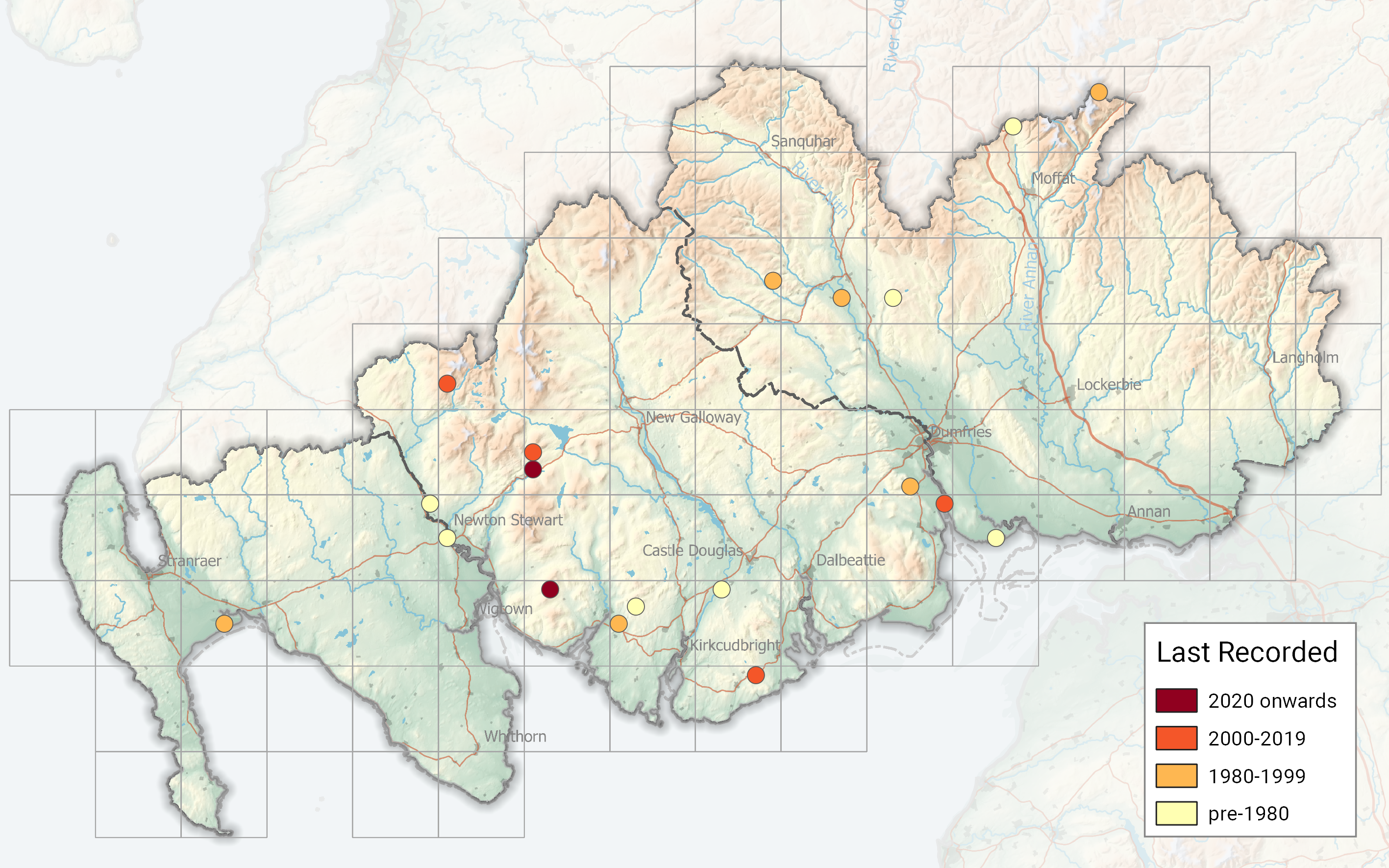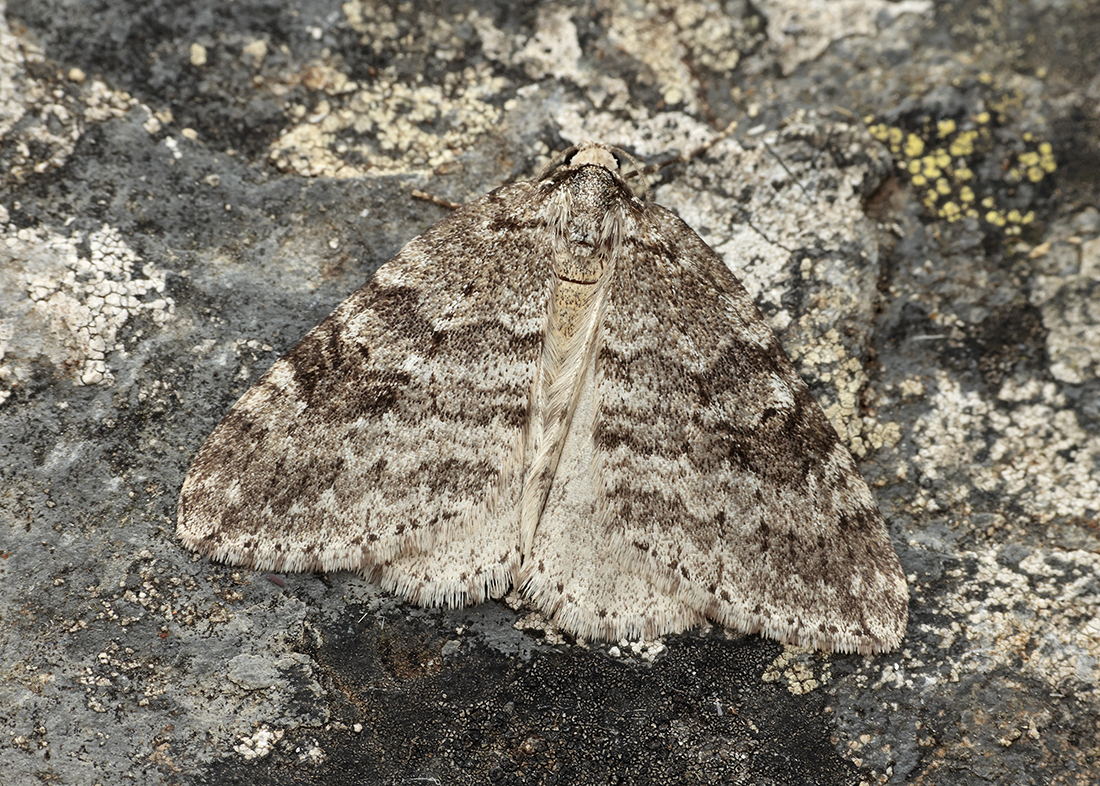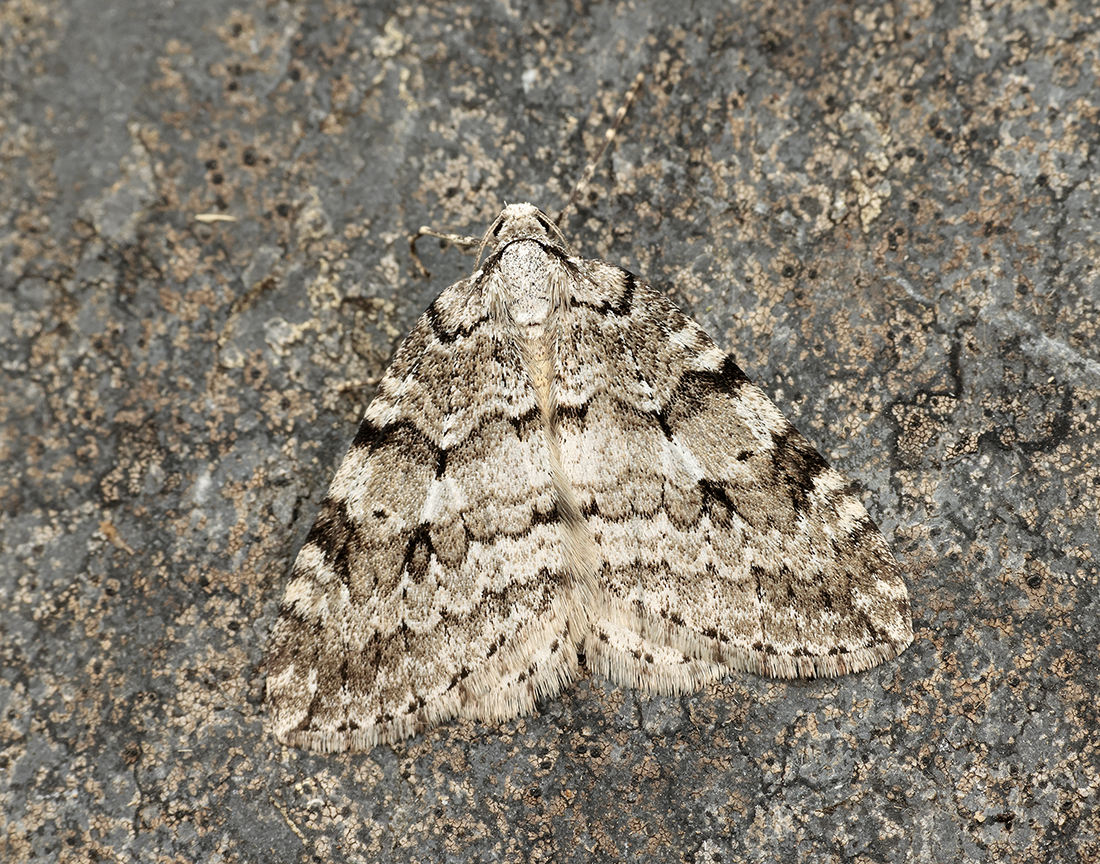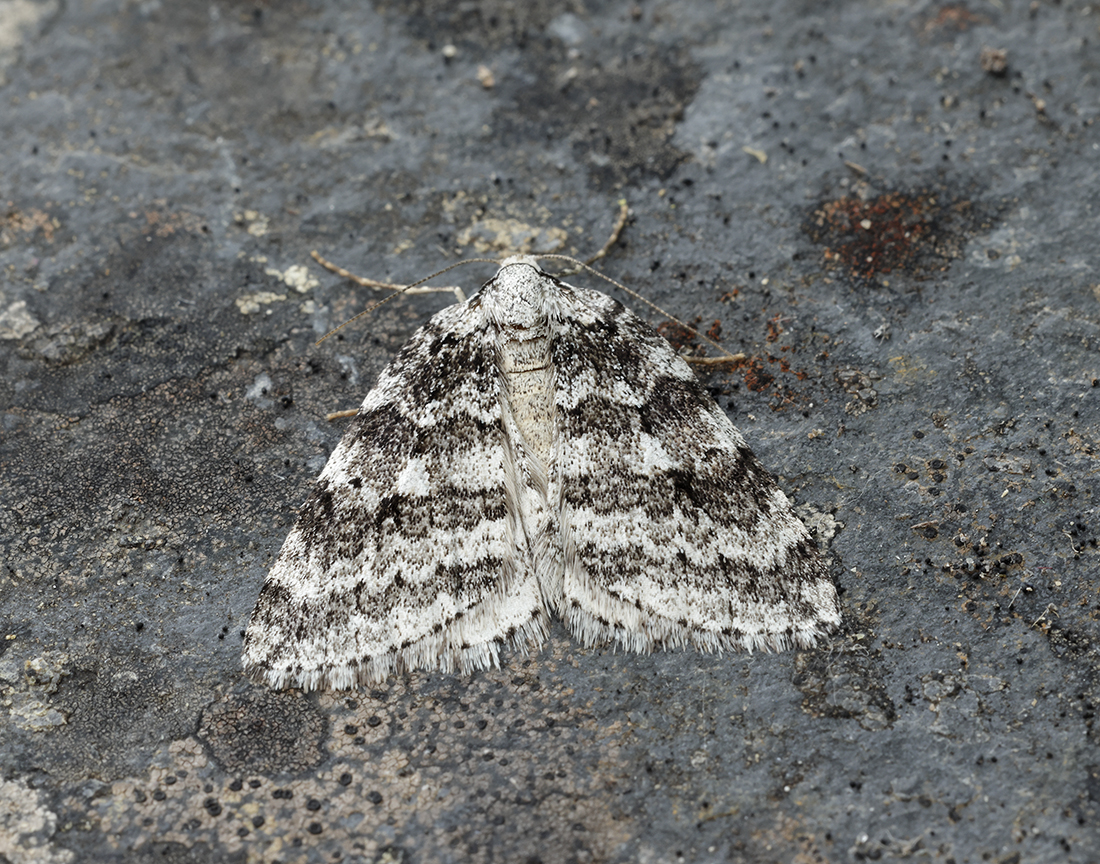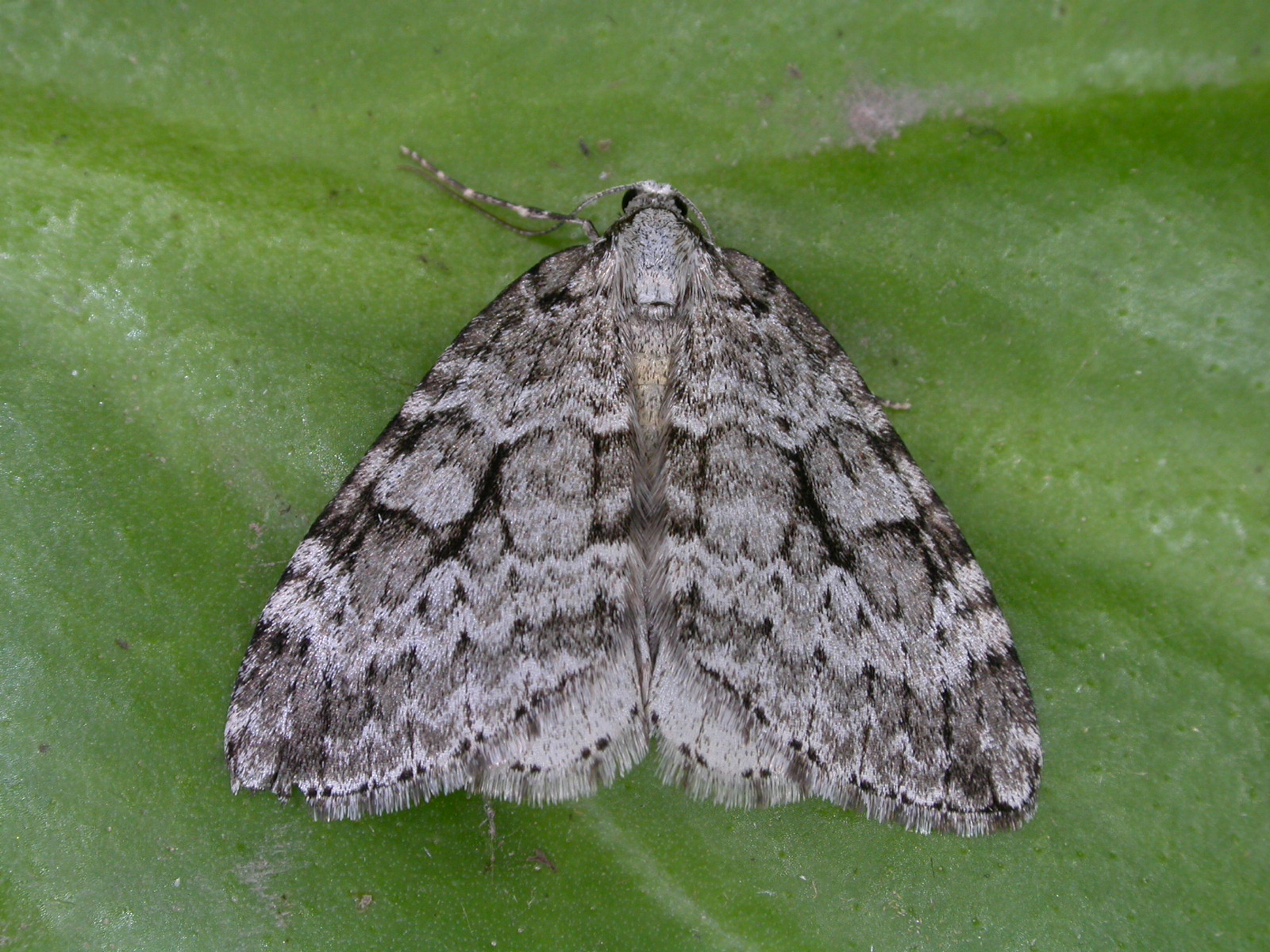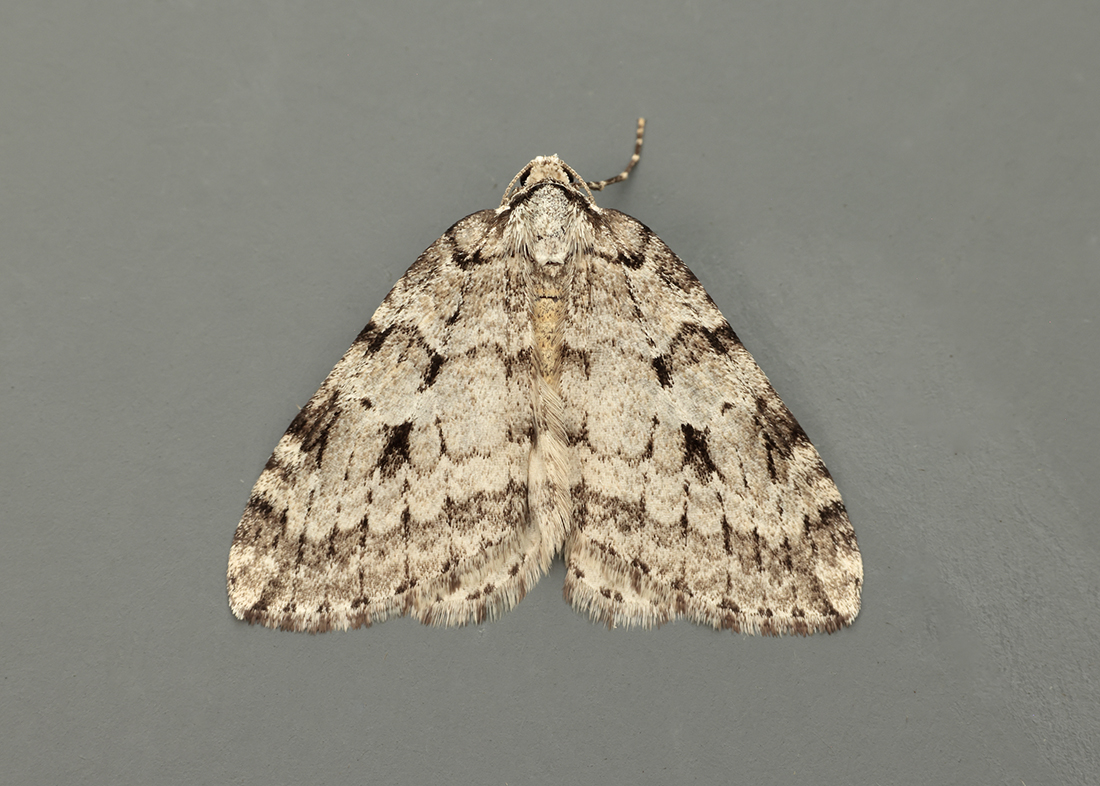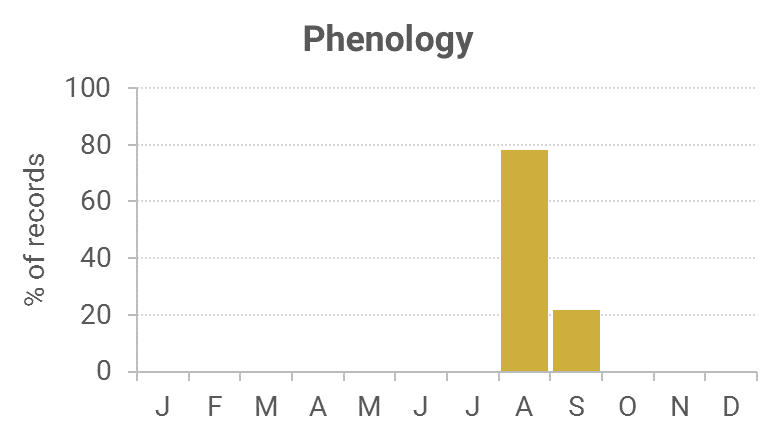Identification
The male and female of this species cannot be told with certainty from Autumnal Moth by genitalia examination. But a smaller Epirrita moth flying in August and September over acid heathland or moorland are probably of this species and can be recorded as such. Although Autumnal Moth flies from late September.
The use of Waring et al. (2009) and Skinner (2009) to determine will suffice for recording purposes.
Record undissected specimens as November Moth agg. (Epirrita dilutata agg.).
Recording method
Can be seen hanging from heather stems after dark, often in large numbers. Comes to light.
Life cycle
One generation. Overwinters as an egg on the foodplant. Larvae are very distinctive from the other Epirrita species and are present mid April to the end of May.
Larval foodplants
Bilberry, Heather and sallows.
Habitat
Moorland where tall heathers are prominent.
History
First recorded for Dumfries and Galloway in 1942 for VC73 near Gatehouse of Fleet by Russell who said that it was ‘in fair numbers on Bilberry during the years 1942-43’, in 1970 for VC72 at Closeburn by Watson and in 1976 for VC74 at Newton Stewart in the Rothamsted light trap.

